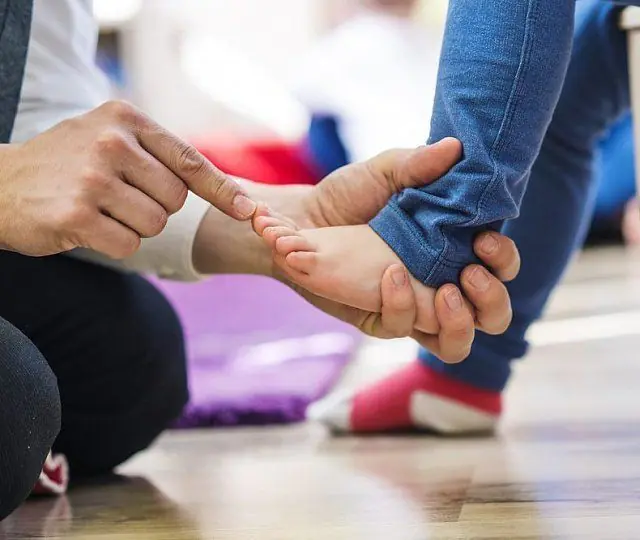
- Size of warts in children
- Types of neoplasms
- Flat
- Simple
- Filiform
- Pointed
- Localization of warts
Warts in children are growths on the skin or mucous membranes that form from the skin epithelium. They can be located both outside and inside, and have completely different sizes and appearance. This depends on the type of neoplasm, which is what is discussed in this article. We will discuss further how warts in a child differ from each other, what features they have and in what ways they can be eliminated.
Size of warts in children
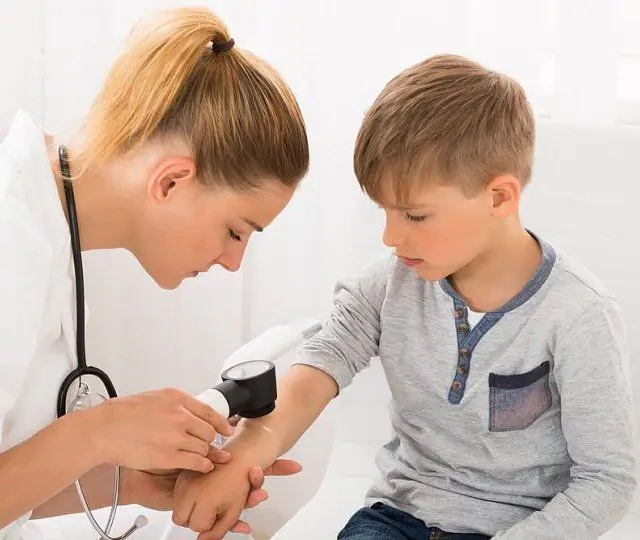
There are many types of warts in children, the growths can be both small and large, but in the early stages they are usually not very noticeable. Over time, their diameter increases and can reach 1-2 cm, depending on the type of formation.
Most often there are genital warts, but such formations appear quite rarely before the onset of sexual activity. The main reason for this is the transmission of the corresponding type of papilloma virus to the child from the mother during childbirth.
The size of different types of warts in children is a very arbitrary concept, since they only in rare cases have the correct shape, and therefore it is almost impossible to determine the exact diameter. It is especially difficult to do this during the period of activation of the papilloma virus, which contributes to the active enlargement of the lesion.
Much depends on the location of the growth, for example, photographs of different types of warts in children show that large growths are usually located on the toes and hands, and small ones on the neck and face.
When present on a child’s body for a long time, they tend to unite, which also leads to a change in the size of the problem area.
Types of neoplasms
Children can develop absolutely any type of wart - flat, filiform, pointed, simple. The only exception to the rule here is age-related growths, which occur exclusively in older people. Quite often, a child has a combination of several types of formations, which are caused by different strains of the papilloma virus.
Flat growths
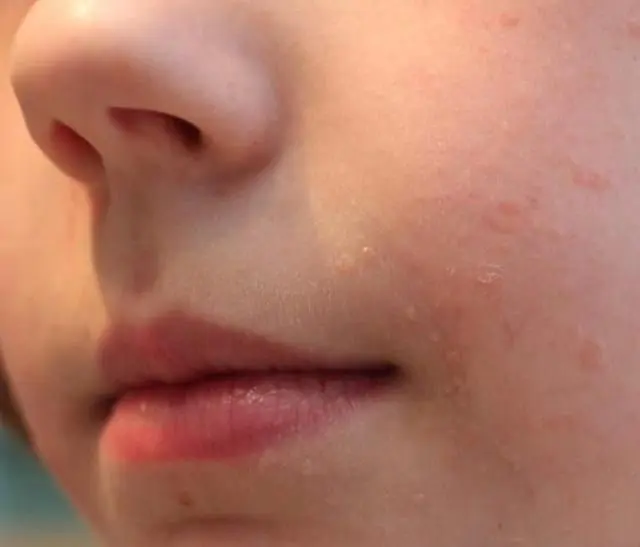
The occurrence of this type of wart in children does not threaten health, since the HPV that causes them is not the most dangerous in terms of oncogenicity. These include 14, 15 or 27 types of strains, which are the most common among the rest. As a result of the virus penetrating inside the body, small bumps or spots appear on the body, which come into close contact with the skin or slightly rise above it.
Flat warts in children almost always have a smooth surface, although sometimes small cracks, inclusions, ulcers, and papules may be observed on it. Their borders are usually clearly defined, and the color ranges from flesh-colored to black; the surface can easily darken as a result of infection.
Over time, a child's flat wart often hardens and becomes denser, although it still remains soft and relatively empty inside. When pressing on the problem area, a small amount of colorless jelly-like liquid may appear.
Due to the low oncogenicity of HPV, the risk of this type of wart in children degenerating into a malignant form is almost completely eliminated.
Note! The optimal method for removing flat warts in children that appear in large numbers is cryodestruction.- See also the reasons for the appearance of flat warts on the face in children
Simple warts

Such growths can appear absolutely anywhere, but most often, like flat ones, they affect the fingers and toes.
Simple warts in children are round bumps, mostly regular in shape, with smooth, pronounced edges. Such growths most often appear in childhood, and schoolchildren aged 7-14 years are most susceptible to this.
One of the symptoms of this type of wart in children is redness, swelling and irritation of surrounding tissues.
In appearance, simple warts in children resemble a burn mark, that is, a blister. Basically, the growth is hard and smooth to the touch, but after a while it can become covered with a dense crust. Most often, it is characterized by a beige, flesh-colored color, so this formation hardly stands out against the background of the skin. However, in some cases a white border can be seen around it.
The size of a simple type of wart in children in most cases is 0.3-0.6 cm; they are very rarely large. Their characteristic feature is the merging into groups that create large lesions.
Simple warts in children have another name - vulgar, which is quite consistent with their unaesthetic appearance. These bumps not only spoil the skin of children, but also, when located, for example, between the fingers, cause severe discomfort. In this case, they are often injured as a result of friction against the skin, which leads to bleeding and increases the risk of infection.
The simple type of warts in children on the hands and other places is characterized by a strong urge to scratch; sometimes this itching is difficult to control, which leads to disruption of the integrity of the growth. In turn, this action entails the spread of the papilloma virus and increases the likelihood of formations occurring in other areas.
Note! For single simple warts in a child, electrocoagulation is quite effective, designed to cauterize them and promote the appearance of a crust necessary for further elimination of the formation.Thread-like neoplasms
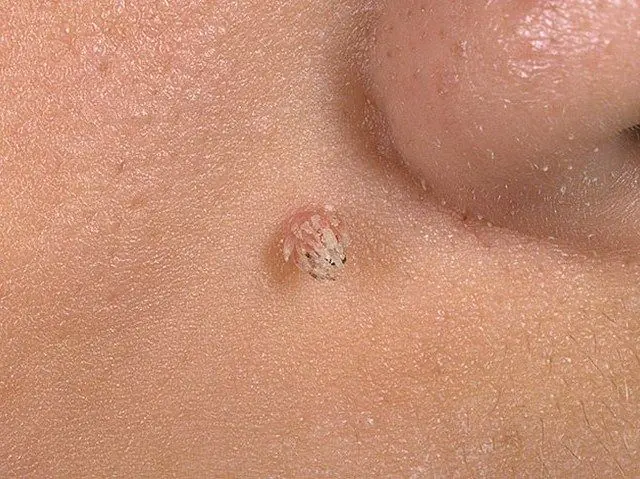
The danger of this type of wart in children is the high probability of the growth degenerating into a malignant tumor and injury as a result of frequent contact with tissues and washcloths when taking a shower. This is especially true for formations on the neck, back, and abdomen. As a result, there is a risk of contracting an infection and spreading the papilloma virus further throughout the body.
Filiform warts in children are also often called acrochords. They have an elongated shape and most often grow on a stalk that goes deep into the tissue. They can reach from 7 to 15 mm in length, but their width is small - no more than 5 mm.
Their surface can be either smooth or rough. Sometimes they look like a blossoming or still intact flower bud. In this case, they are characterized by multi-layering.
As a rule, the color of filamentous warts in a child is flesh-colored, barely pink or brown. But such formations can be red at the base, white in the center, and black on top.
Acrochords rarely appear in groups, but their number may increase over time.
These warts in children can be seen on intimate places, the face, under the armpits, between the fingers, and on the outside of the hands. Less commonly, they appear on the head and neck.
Important! Unlike other types of warts in children, thread-like growths almost never go away without outside help. The best way to combat them is radio wave and laser therapy.Condylomas acuminata
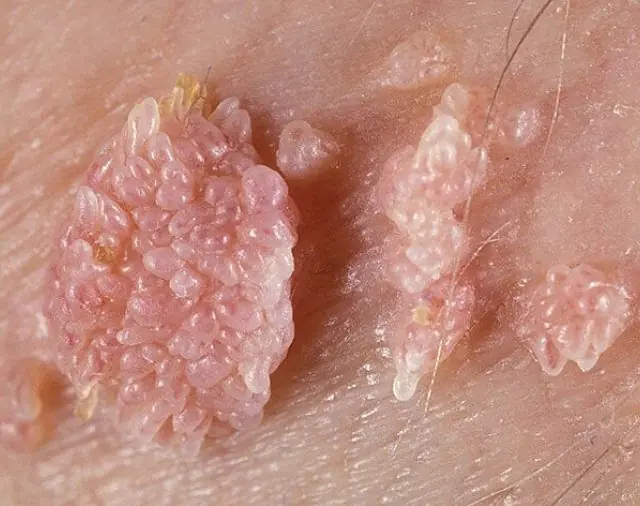
The cause of such warts in children is infection with papillomavirus types 6, 11 or 16. Of all the formations, they are the most dangerous for the child, as they tend to become malignant. However, these warts appear quite rarely in children and are mainly a result of HPV transmission from mother to child during childbirth.
Genital warts in children can be found in intimate places, in the mouth, and on the face.
They are very different from other species with their irregular, convex shape, lack of boundaries as such, and unpleasant rough surface. Typically, these formations consist of several layers that overlap each other and create a lesion of considerable size.
The diameter of genital warts in children, which are most often called condylomas, varies from 0.4 to 2-3 cm. Very often they combine with each other, which is why their size increases.
Their color ranges from flesh to dark beige, but pink growths most often appear. Outside, you can see many papules and white inclusions.
After eliminating the formations, there remains a danger of their reoccurrence on already treated or even completely different areas due to the high activity of the corresponding types of papilloma virus.
It is important to know! Before surgical or physiotherapeutic removal of warts in children, a biopsy is recommended to exclude the malignancy of the process.- Read also about treatment methods for genital papillomas
Localization of warts in a child
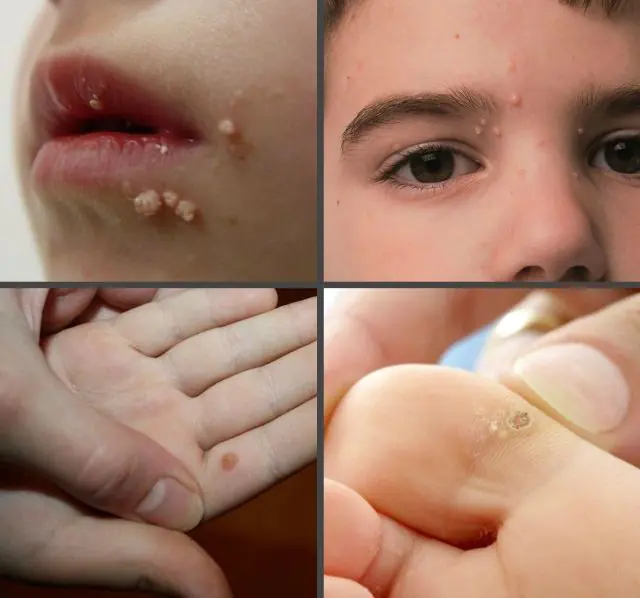
The photo shows what kind of warts a child has
Such warts in children can appear both on the body and on the face. They can be both external and internal, affecting intimate places and the oral cavity. They can often be seen on the forehead, near the lips, near the nose, near the ears and even on the head. Sometimes genital warts are localized on the neck, legs, and arms (mainly on the hands and under the arms).
The most dangerous warts in children are those found on the tongue, penis in boys, tonsils and gums. They tend to grow, which over time leads to severe discomfort.
Depending on the location, warts in a child are treated by an otolaryngologist, gynecologist, proctologist, dermatologist, together with a virologist and pediatrician.
If warts in children are located in a place that is not protected from the negative effects of sunlight and low temperatures, then sooner or later their appearance changes - their integrity is compromised, the surface darkens, redness, rash and swelling occur.
What types of warts do children have? Watch the video:
Whatever type of wart a child develops, one should not turn a blind eye to it. If it looks natural, then it is worth observing it and, at the slightest suspicion of pathology, make an appointment with a doctor. The sooner a possible problem is detected, the faster you can get rid of it and protect your health.
- Related article: Papillomas in children: causes, symptoms and treatment



